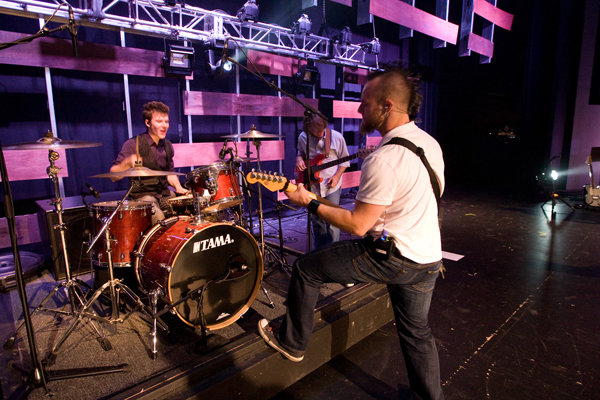(RNS) Look around the pews in December and you’ll see faces you didn’t see in July. The holidays present a unique opportunity for congregations to bring in new members seeking a spiritual home, and one demographic churches would love to see more of is young adults.
A 2012 survey from the Pew Forum on Religion and Public Life found that a third of adults under age 30 had no religious affiliation, compared with 9 percent of senior citizens. More worrisome for congregations thinking about future membership: Millennials are twice as likely to be unaffiliated as baby boomers were at the same age.
So how to bring them in? Unfortunately, the first impulse church leaders have — add guitars to services and get on social media — is misguided. The thinking is that “if only we had a better Facebook, Twitter and Instagram presence, people will come!” says Naomi Schaefer Riley, author of the new book “Got Religion?: How Churches, Mosques and Synagogues Can Bring Young People Back.”
The reality is more complicated, but congregations that get it right can reap the rewards of having young members contributing to community life.

Cross Pointe Worship Team rocks out during a performance. Photo courtesy of Cross Pointe Church
Treat the young as adults
As Riley researched youthful congregations, she found a few things. First, “if you treat young adults like adults, they’ll act like adults,” she says. In many congregations, leadership roles automatically go to older people. But “most of the responsibilities associated with religious communities — dealing with accounting, prayer in services — they are all things 25-year-olds are perfectly capable of doing.” Somebody just needs to ask.
Steven Castello, the 32-year-old pastor at Ardent Church in Birmingham, Ala., says that’s what he does. “We throw people into the deep end,” he says. “You are going to serve. A lot of our leaders are young.”
Treating young adults as adults also means taking their lives and spiritual journeys seriously. Logan Dagley, the young professionals pastor at Summit Church in Durham, N.C., says his church’s biggest demographic is 25- to 29-year-olds, in part because Summit “makes sure that we’re actually answering the problems and the challenges that they have.” What does it mean to live the gospel as a single person? Prayers can be about job searches and financial troubles, not just the health woes of the middle-aged.
Second, Riley found that young people are incredibly locally focused. They want neighborhood churches. Urban millennials forgo car ownership, and even in other regions, “they’re looking for an authentic community,” says Dagley. So Summit gets all members involved in small groups, and “instead of one massive building, we plant local campuses in as many communities as we can in our city.”
‘Do life together’
Ardent likewise organizes all members into communities of 15 people who “do life together,” says Castello. “We talk about being a family, and we mean it.”
To be sure, plenty of churches have small groups and welcome volunteers but still struggle to bring young people in. Some of this is just practical. The after-college, before-kids time is often too transient to justify a church commitment. Plus, there are philosophical reasons that some millennials shy from traditional congregations.
Jordan Brown felt God calling him to be a preacher about the same time he figured out he’s gay. He came out at age 22 to his family and church, and “the church part didn’t go so well,” Brown says.
So he decided to found the Church of Open Doors in Austin. With its message of tolerance, the church mostly draws members who are ages 20-35. According to the Pew Research Center, 69 percent of young people support gay marriage vs. 40 percent of those ages 65-plus. If a church is perceived as intolerant, it will struggle to bridge that gap.
But many mainstream denominations now welcome gay and lesbian members, and there are plenty of unchurched types among millennials with more traditional views, too. It’s often the other puzzle pieces that are missing. Brown notes that at Texas megachurches, the younger crowd often doesn’t connect. “So what these churches are doing now is breaking off into smaller groups,” he says. “That way, you can actually engage and learn about the people that you’re consistently going to church with.”
Ask 20-somethings to lead these groups, and you just might see more coming into the fold.
(Laura Vanderkam is the author of “What the Most Successful People Do Before Breakfast” and is a member of USA Today’s Board of Contributors.)




